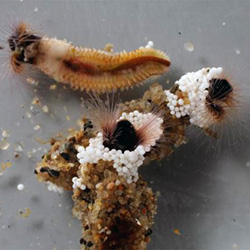
University of Utah bioengineering professor Russell J. Stewart has turned to the sticky underwater sandcastle worm to help with a potentially dangerous problem when surgeons perform fetal surgery to check on the health of unborn babies.
By studying the natural glue that is secreted by the sandcastle worm, university researchers have created a synthetic adhesive that can be used after surgery to help seal a puncture in the fetal membranes that is made by a fetoscope, a device used by doctors to access the fetus in the uterus. After surgery, if the puncture results in a leak or rupture, it can lead to premature birth of the fetus. The benefit of this new adhesive is that it can remain bonded in water where others might fail.
“It’s a synthetic adhesive, designed on the chemistry of the natural adhesive [of the worm],” Stewart said. “We copied the chemistry of the natural adhesive with synthetic polymers.”
Animal studies to test the adhesive in pregnant mini-pigs have been done in Houston with Drs. Ramesh Papanna and Ken Moise at the Texas Fetal Center.
Stewart and his team have been working on the project for about 10 years and hope to publish the results from the animal tests sometime in the fall, he said. Stewart presented his results during this month’s 248th National Meeting and Exposition of the American Chemical Society in San Francisco.